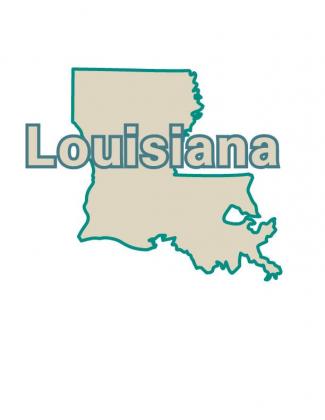
Jim Bradshaw
You have probably never heard of G. W. R. Bailey, but his thinking and influence were crucial to the decision of where lots of people in south Louisiana live. As the chief civil engineer for Morgan’s Louisiana and Texas Railroad, he decided where the tracks would go, and that dictated where new towns would be built.
The New Orleans, Opelousas and Great Western railroad had reached from Algiers, across the river from New Orleans, to Brashear City (as Morgan City was then called) in 1857, but the line went no farther. Its builders ran out of money, and the Civil War erupted before they could raise enough to lay more track.
For several years the company kept alive its hopes to run the rails across southwest Louisiana and link at the Sabine River with a line running from Houston. But the war dealt a fatal blow to the plan and the railroad company itself.
After the war, shipping magnate Charles Morgan bought the ruins of the railroad from a bankruptcy court. His idea was to run trains from New Orleans to Berwick Bay, which was deep enough for his steamships that traded with Galveston and other ports in Texas and Mexico. By using Berwick Bay as a terminal, he could avoid the long trip up and down the Mississippi River to New Orleans, as well as the city’s expensive wharfage fees, and also the interruptions caused by regular yellow fever quarantines blocking goods and people from the city.
When Bailey became Morgan’s chief engineer his first job was to get trains and steamboats connected at Berwick Bay, but then he began to look again at the old scheme to take the rails to Texas — without bankrupting the company again.
He had several options to consider. One was to extend the rails up Bayou Teche to New Iberia and to turn west from there. Another was to continue north to Vermilionville (Lafayette), then head for the Sabine. The third was to go farther north to Opelousas before turning west.
In March 1868, Bailey estimated that it would cost about $1 million to build the line to Vermilionville and that it would cost another two million to take it from there to Niblett’s Bluff on the Sabine just west of the present town of Vinton. He said it would cost at least another million above that to get to Texas if the line continued north to Opelousas before turning toward Thompson’s Bluff, which was north of Niblett’s Bluff.
As Bailey saw it, the company needed to connect New Orleans “at the least cost and in the shortest time,” with Houston, “the railway center of Texas.”
As for the New Iberia plan, Bailey said a line across the flat prairies “from a point near Vermilionville, via Lake Charles, or near it, to the Sabine River ,” would “run through a better section of country,” and that it would “avoid all sea marsh, need only two drawbridges, and be but 100 miles instead of 118 miles.” He said it would be “folly” to take on the increased cost, “with no corresponding advantages.”
In July 1878, George Pandelly, superintendent of the railroad, promised that 3,000 tons of steel rails would be delivered in Algiers by September and that the line was “ready to commence building the road beyond Morgan City.” By the following March, the Morgan company had laid 75 miles of steel rails up the Teche to Vermilionville, and had coordinated the route west with another line, the Louisiana Western, that was starting at the Sabine and building east. Linking the two would provide an uninterrupted 350-mile line from New Orleans to Houston.
The plan came together on Aug. 30, 1880, when the first through train ran from Houston to New Orleans. Connecting the two commercial centers was a great, and profitable, step but the railroad managers saw that they were leaving money on the table.
The trains were doing good business on the run up the Teche, where there were already communities built around old steamboat stops, but they were running mostly across unpopulated prairie between the Vermilion and the Sabine. That meant no stops for (and no money from) picking up passengers and freight along the way.
Their solution was to aggressively promote new settlement on the prairie, especially at or near places where railroad stops were needed to fuel the trains and maintain the tracks. Their plan worked, largely because Midwestern wheat farmers found that they could grow rice here without investing in new equipment and without having to put up with cold Northern winters.
That is why anyone following the tracks alongside old U.S. 90 will pass through a town almost exactly every five miles — Lafayette, Scott, Duson, Rayne, Crowley, Estherwood, Midland, Mermentau, Jennings, Roanoke, Welsh, Lacassine, Iowa, Chloe, Lake Charles, Westlake, Sulphur, Vinton and Toomey.
Their railroad heritage is kept alive in part because Jennings, Crowley, and Rayne were named for railroad men and several of the other towns were named by them. But there is no Bailey or Baileyville on the route he chose across the prairie, and his name and role are all but forgotten.
A collection of Jim Bradshaw’s columns, Cajuns and Other Characters, is now available from Pelican Publishing. You can contact him at jimbradshaw4321@gmail.com or P.O. Box 1121, Washington LA 70589.
